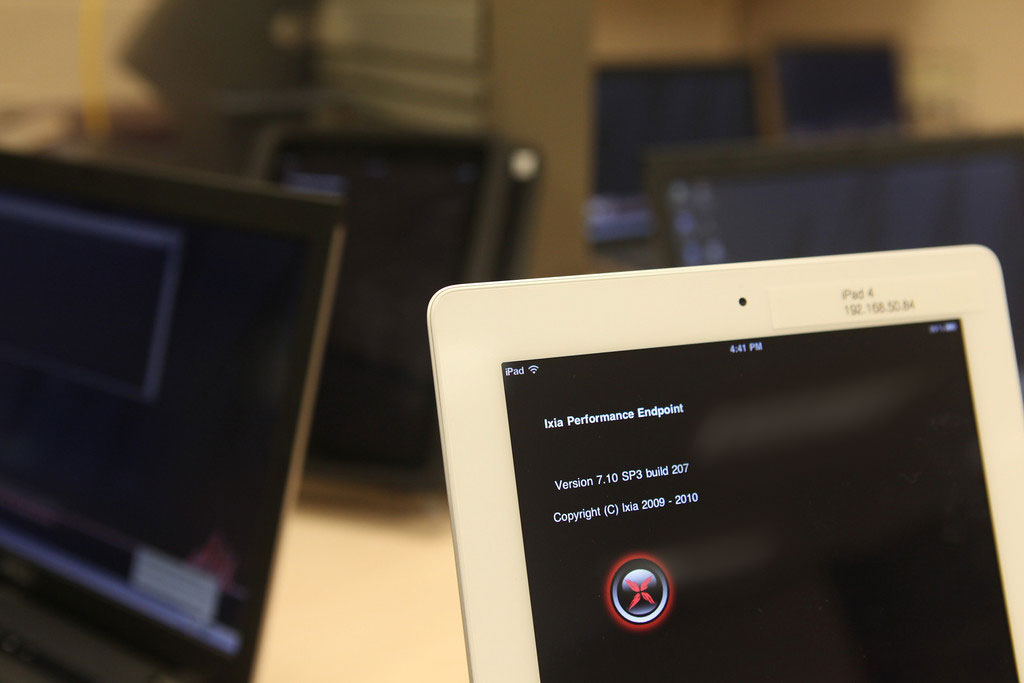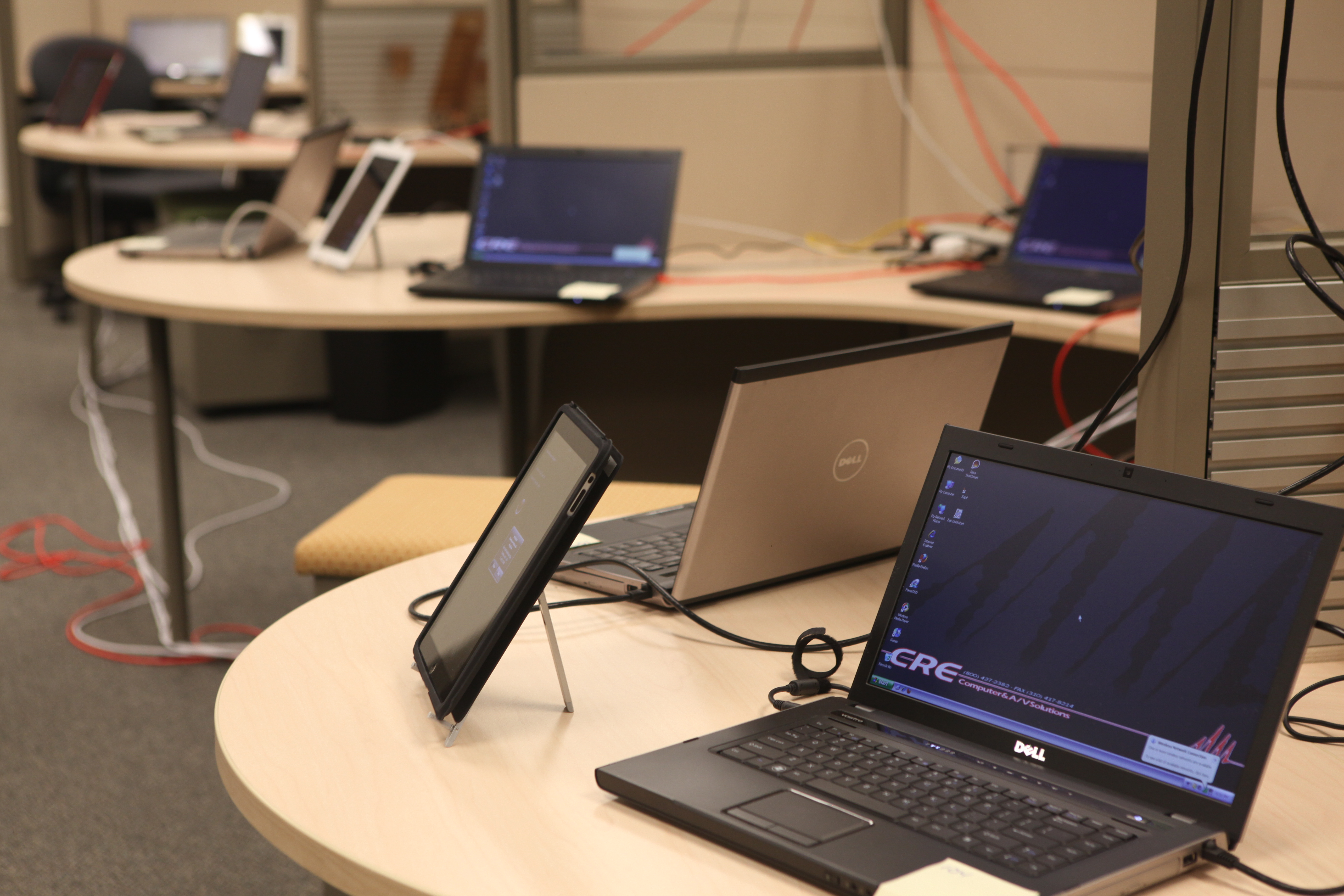Why Your Wi-Fi Sucks And How It Can Be Helped, Part 2
In Part 1, we explained what can go wrong with Wi-Fi signals and how access points can work to improve your wireless performance. It's time for a reality check. We throw six contenders against 65 clients and some hellish interference. Who's left standing?
Hardware And Methodology, Explained (Continued)
Clients
For our single client, we used a Dell Latitude E6410 with the following specifications:
- Intel Core i7-620M (2.67 GHz)
- 4 GB RAM
- Centrino Ultimate-N 6300 (3x3:3)
- Windows 7 Professional (64-bit)
- Power plugged in for all tests
Each wireless test on this client was run four times, with the laptop turned 90 degrees for each instance. Throughput numbers represent an average of these four results.
For our 5 GHz interference and load tests, we used 60 Dell Vostro 3500 laptops with the following specs:
- Intel Core i3 2.27 GHz
- 3 GB RAM
- DW1520 Wireless-N WLAN half-mini card (Broadcom, driver 5.60.48.35)
- Windows XP Professional SP3
- Power/plugged in for all tests
Not least of all, we used five Apple iPad 2 tablets to better examine the impact of ultramobile devices in a mixed wireless network. Careful readers might remember from part 1 that we noted having nine iPads and iPad 2 units—which we did. However, when push came to shove, we ended up only using data from tests featuring the five iPad 2 tablets. The remaining four iPads didn’t play into the data we eventually recorded in order to have consistent client antenna designs. At least they made for impressive photography.
We debated for some time over whether to run the bulk of our tests on 2.4 GHz or 5.0 GHz and ultimately sided with the latter for two reasons. First, while most consumer products are clearly using 2.4 GHz, enterprises are now transitioning to 5 GHz on new roll-outs because of it is the less-used band. In testing predominantly enterprise-class equipment, we wanted to use today’s best of breed spectrum, and right now that means 5 GHz. There is simply far less traffic in that band, which means (in general) better client performance. Second, you’re seeing increasing numbers of dual-band routers and access points appearing in the consumer space as vendors bring their higher-end technologies to the mainstream. Ultimately, as Wayne Gretzky would say, we decided to target where the puck is going, not where it has been.
For 2.4 GHz testing, we placed all devices on channel 1. For 5 GHz, we went with channel 36.
Get Tom's Hardware's best news and in-depth reviews, straight to your inbox.
Current page: Hardware And Methodology, Explained (Continued)
Prev Page Hardware And Methodology, Explained Next Page What Interference Looks Like-
winner4455 Hey, I still haven't read this article but right away I notice the new format. Just thanking you for listening to your readers! :)Reply -
cangelini Very welcome Winner. We thought the picture story format would work for that last part and didn't realize the text would come out to be so terrible. From now on, we'll only use picture stories when the captions fit without requiring another click!Reply -
tacoslave cangeliniVery welcome Winner. We thought the picture story format would work for that last part and didn't realize the text would come out to be so terrible. From now on, we'll only use picture stories when the captions fit without requiring another click!"Now thats what i like to hear!"Reply -
nekromobo What if you add few thin-foil balls to room (the size of fist or 2)Reply
That should add few rf-reflections or paths, right?
Just your 2cent amplifier.. :) -
I wonder why you didn't include Juniper products (formerly trapeze)to this test. It's quit a big player here in europe. Trapeze also produced the 3com wireless manager and accesspoints which was sold widely here.Reply
-
Hupiscratch In the page "Benchmark Results: Close Range, No Interference", the HP AP is missing on the downlink graph.Reply -
Onus This was an outstanding article. Going just by this, Ruckus and Cisco are the only two I'd consider out of the box, but it would be very interesting to do a follow on that features even a minimal amount of tweaking to see what changes. A consumer expects a product to work well out of the box, but an enterprise network engineer almost certainly does not.Reply
-
Very thorough. Lots of hard work went into this and it shows. But how did you select client devices? Did you try any other chipsets? We tried something like this with more diverse clients and got results that were too variable to reach conclusions. (Some clients just did better with some APs than others.)Reply

